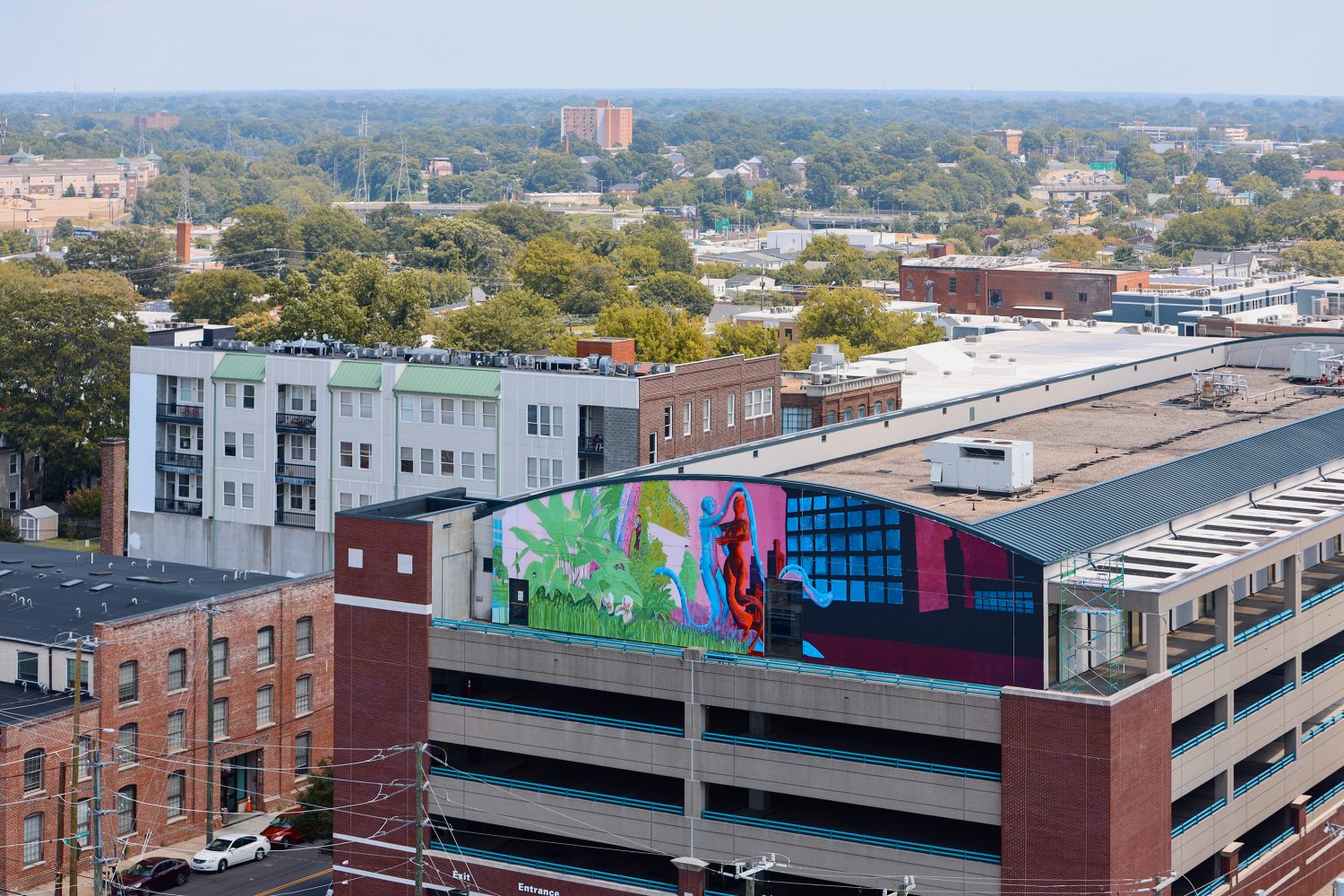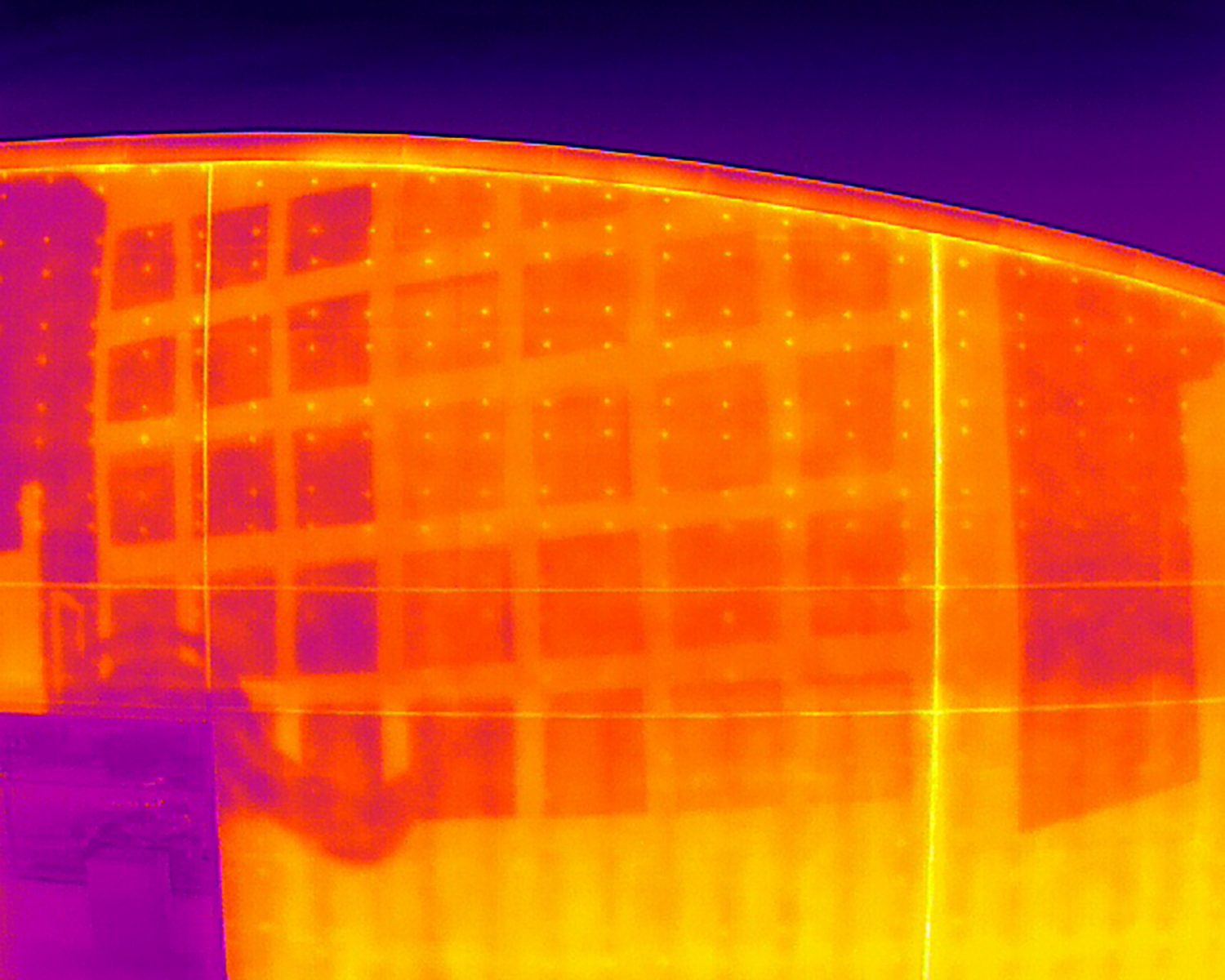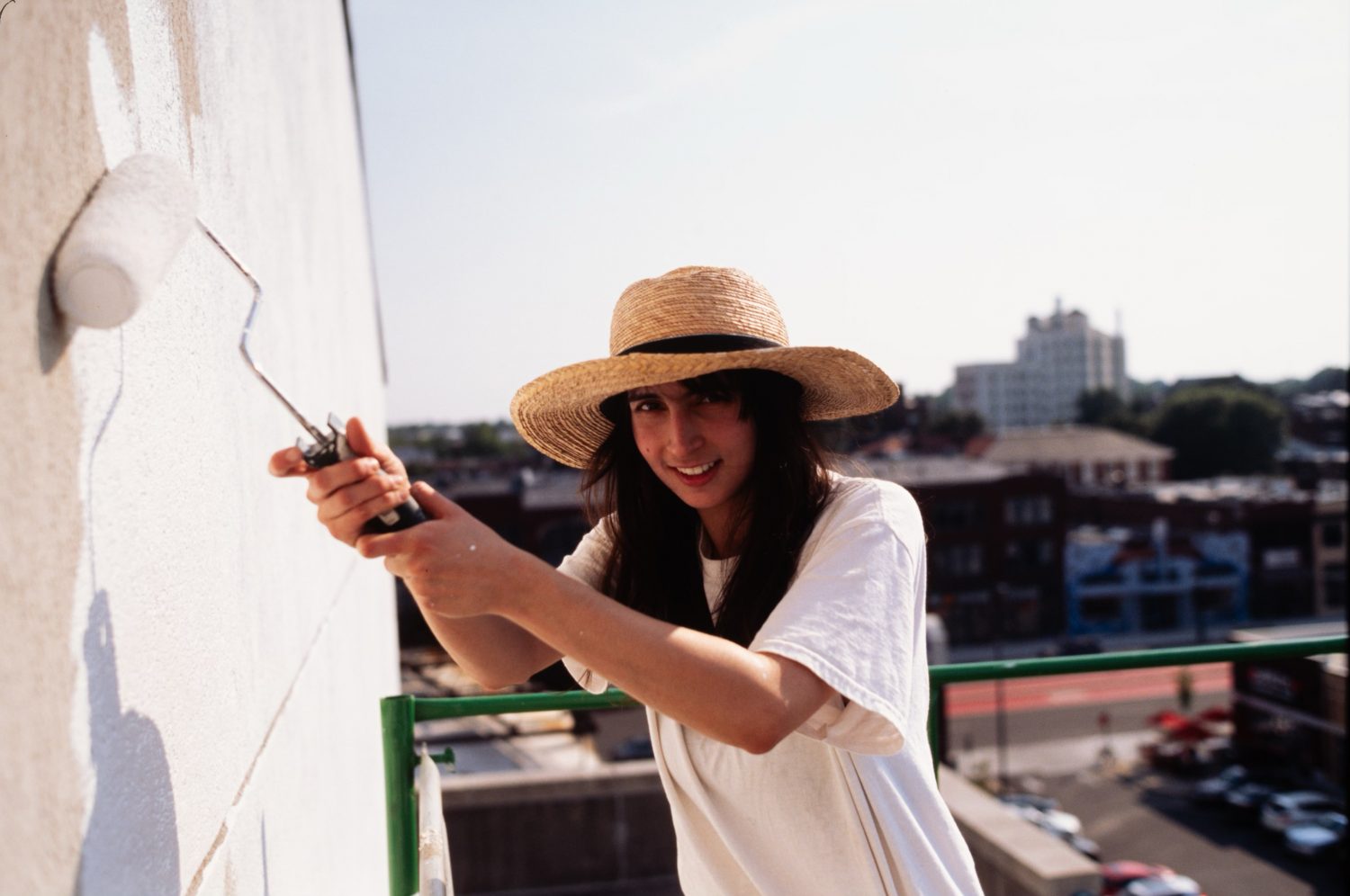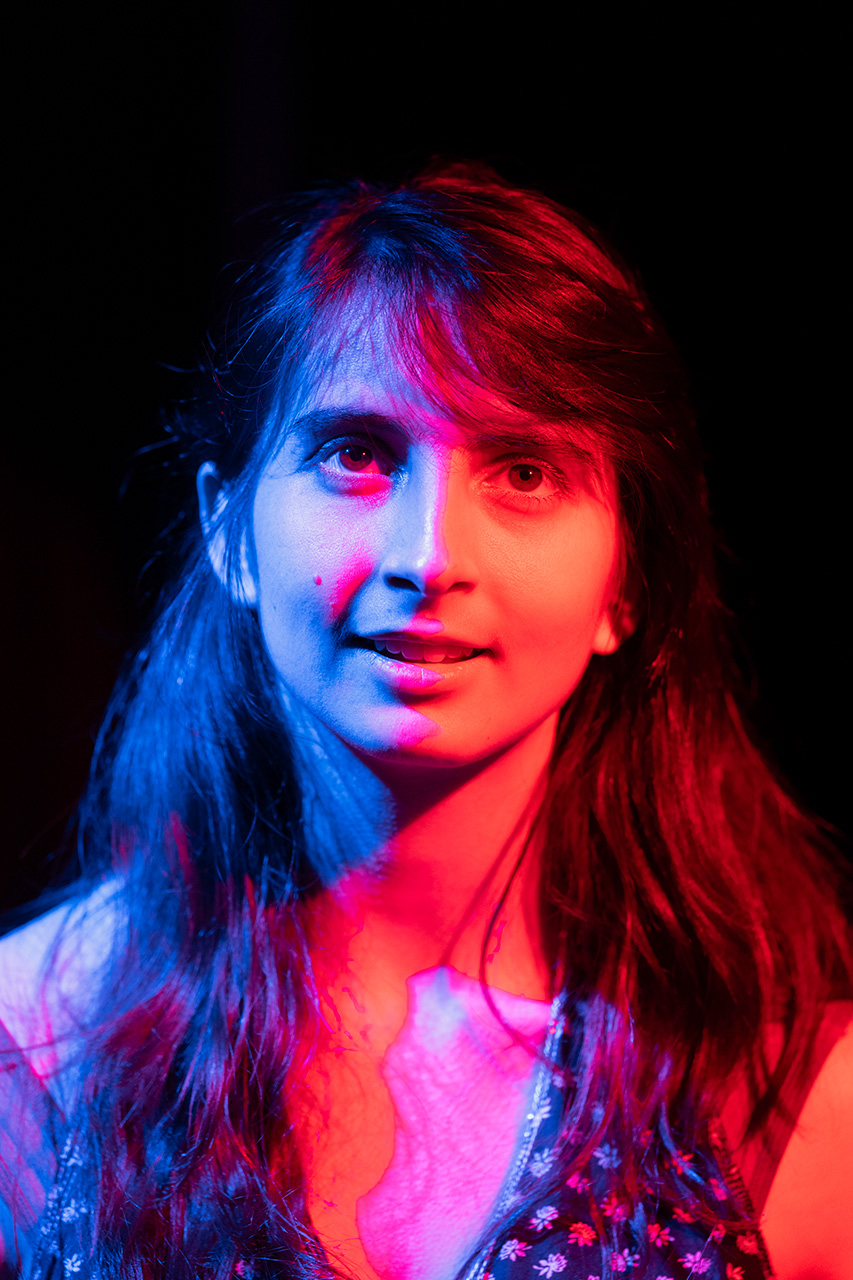
Large-scale mural by junior Sirena Pearl merges art and a hot topic—the urban environment
Environmental Sciences first piqued Sirena Pearl’s interest in community college, but painting was her passion. After transferring to The School of the Arts during her freshman year, she began melding the two. Pearl, a junior who is majoring in painting and printmaking, initially learned about the urban heat island effect in an environmental science course. The phenomenon—an area that is significantly warmer than surrounding suburban and rural locations—occurs when natural land cover such as trees is replaced with surfaces that absorb and retain heat, such as concrete. Wanting to know more, Pearl read about a University of Richmond and Science Museum of Virginia research project that captured thermal infrared images of murals around Richmond to study their heat absorption.
What would happen, she wondered, if she painted a mural using heat-absorbing or solar-reflective materials? Last year, Pearl set out to depict a sustainable city with cooler temperatures as well as an urban heat island with warmer temperatures.

Completed in July 2023—and adorning the top of VCU’s Bowe Street Parking Deck—the large mural demonstrates the factors that increase and decrease the heat island effect. Pearl’s work features two opposing figures representing how the community can contribute either to the solution or the problem.
Now, after winning The Science Coalition’s fifth annual Fund It Forward Student Video Challenge for her mural, Pearl has received a second grant from VCU to expand her project.
It’s not visible to the naked eye, but the urban heat island effect increases energy costs, pollution and heat-related illnesses. Pearl’s thermal painting communicates the effect with two worlds personified as figures representing the complex and chaotic ecological systems of humans and the environment. The first figure represents an urban heat island, sweating and in pain from absorbed heat. The second figure symbolizes the ideal sustainable city, with cooled temperature and a relaxed posture.
“The surrounding environment of the red figure displays concrete infrastructure, asphalted roads and empty vegetation—an embodiment of an urban heat island,” Pearl said. “The blue figure resembles a city modeled on sustainable foundations—the opposite of an urban heat island—with extensive forest coverage, wildlife and buildings with garden roofs surrounding the personification. The blue figure’s temperature is cooled, and their posture is mostly at rest.”
In addition to visualizing the issue, the mural proves that strategies already exist to reduce the heat island effect.

Pearl used a solar-reflective coating that helps to cool the surface temperature. A thermal infrared camera captures the temperature differences, displaying the warmer temperatures of the mural as a bright yellow and the cooler areas as a dark purple.
“Generally, colors that are shaded darker absorb more heat than lighter colors,” Pearl explained. “Colors similar to shades like white reflect the sun and are less heated. … You can view these temperature contrasts because I painted the red/urban heat island figure with much darker shades, and similar to urban heat islands, the material used on infrastructure in cities makes a prevalent difference in temperature.”
Additionally, she experimented with solar-reflective sealant on the blue figure embodying the sustainable city.
“The ‘cool coat’ sealant I used has a formula that contains ceramic spheres that help the reflection of the heat from the sun,” Pearl said. “I am currently in the process of measuring how effective this sealant is in cooling the surface of the blue figure.”
The project was supported by Roberto Jamora, an assistant professor in the Art Foundation program at VCUarts who mentored Pearl, and it was funded in part by VCU’s Undergraduate Research Opportunities Program (UROP).
“In terms of research we’re putting together, Sirena was really fascinated by how artwork can look differently depending on how it’s viewed,” Jamora said. “What [she] investigated in the work is the use of materials that we probably pass by every day but don’t realize the effect of these construction and building materials on our everyday lives.”
With Jamora’s help, Pearl learned skills such as applying for a research grant and writing and presenting a proposal.

Working on such a large scale—the mural is 25 by 91 feet—also presented a significant learning curve for Pearl, who had to use equipment such as scaffolding, rollers and spray paints.
“This project was my first large-scale exterior mural, and I was lucky to meet, receive advice and talk to local Richmond muralists and street artists,” Pearl said. “I met many muralists and street artists from the local art store Supply RVA, run by Ian Hess. So much planning, manual labor, budgeting and patience go into mural making. … It was also such a different experience to have the opportunity to shift the perspective of my work from a gallery/personal setting to one experienced by a community.”
Fittingly, climate change and the heat island effect impacted Pearl’s ability to complete the project before the end of the summer last year. She quickly learned the importance of weather conditions when creating an exterior mural, and she had to adjust her schedule to start painting before sunrise.
“She was coming out here at 4 in the morning to paint because it just got so hot” during the day, Jamora said. “There’s no cover out here on the parking deck balcony.”
Pearl completed the mural itself in late summer of 2023, but her research via the thermal infrared camera continued. Pearl has used a camera to compile qualitative data to see how the cool-coat sealant and dark colors versus light colors changed the amount of heat reflected throughout the day. The differences are most apparent, she said, by midafternoon once the sunlight has directly hit the wall for a few hours.
“This UROP fellowship project will really set the bar for what an arts and science cross-disciplinary project can be like,” Jamora said.
The project received significant recognition in December of last year when Pearl won The Science Coalition’s fifth annual Fund It Forward Student Video Challenge for undergraduates.
Students at coalition member institutions were asked to create a video explaining their personal connection to fundamental research and why Congress should continue to invest in the partnership between federal research agencies and their university counterparts.
“VCU is exceptionally proud of Sirena and her truly innovative cross-disciplinary work melding art and science,” said VCU President Michael Rao, Ph.D. “By helping diverse audiences understand complex issues that impact us all, her work speaks to VCU’s mission as a public research university dedicated to advancing the human condition and pursuing discoveries that make a difference in our communities.”
As the next phase of the project, also funded by a UROP grant, Pearl conducted another time lapse over the summer, using thermal captures from a drone.
“I’m guessing that during the summer, the retention of the image clarity will stay a lot longer after sunset,” she said.
Pearl will also test the ability of the clear solar-reflective coating over the darker shades of the mural. Depending on the effectiveness of the cool coat, this recorded information may be helpful for other muralists who want to reduce heat retention in darker shades of their murals.
As for her own future, Pearl plans to continue exploring ways to use art to highlight environmental risk, with an emphasis on local issues and potential solutions.

“As artists, we have a lot of potential to help people understand complex issues, especially involving data,” she said. “Climate change is such a complex issue to communicate, and focusing on a local area and issues is so important. If you get local communities involved onboard and educate enough people, you can actually make changes.”
This feature first appeared in the Fall 2024 issue of VCUarts Studio Magazine
Photos courtesy of Sirena Pearl and McNair Evans